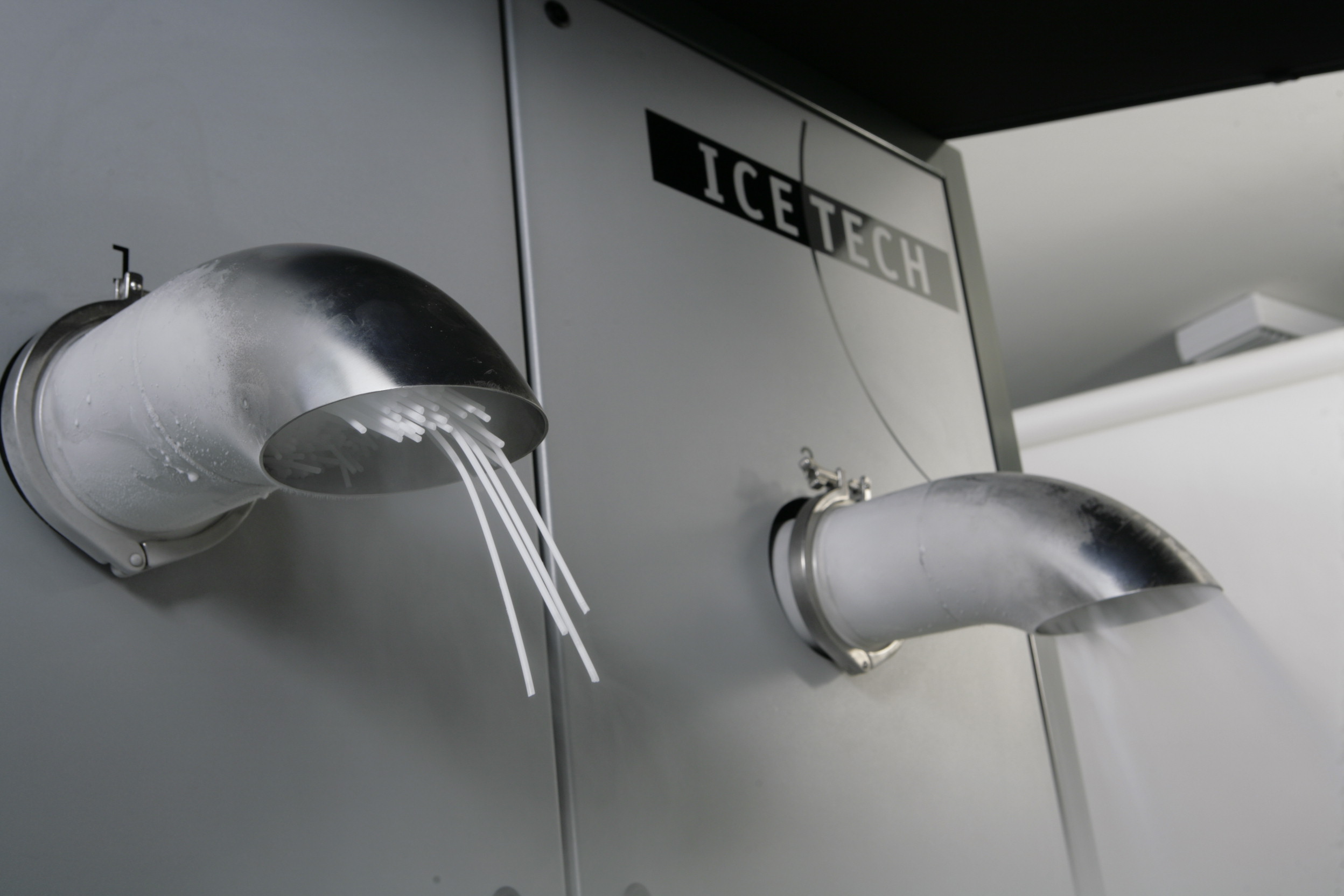Processing and Manufacturing
Food Processing
Meat processors use dry ice (or Liquid CO2) to keep meat temperatures low and reduce spoilage – dry ice has been proven to preserve freshness, color and flavor.
In sausage manufacturing, dry ice serves two purposes in the processing stage:
- it retards bacteria growth, and
- it keeps the sausage cold as it is grinded
Winemaking (Cryomaceration)

The benefits of using dry ice in maceration are:
- Initial rate of fermentation is slowed
- Bacteria growth is inhibited
- CO2 gas displaces oxygen around the grapes, reducing damage from oxidation or risk of oxygen spoilage
- Does not affect or contribute to humidity levels in the wine
- Produces more organoleptic wines than traditional fermentation methods
- Produces wines with higher quality color, smell, taste and feel
Additionally, dry ice is used to transport the grapes from vineyard to cellar, preventing exposure to high temperatures, onset of fermentation or rapid fermentation. Similarly to its use in cryo-maceration, dry ice in transporation lowers the chance of spoilage by oxidation and maintains the quaility of the grapes.
Baking
The baking industry incorporates dry ice into mixing processes for a few reasons: to slow yeast growth, control dough temperature, and impede bacteria. Due to some of dry ice's properties – bacteriostatic, food-grade, and residue/water free – dry ice makes a perfect addition to any food manufacturing process.
Composite Material Manufacturing
Dry ice is used in composite materials production to keep components cool and malleable. For example, aircraft manufacturers use carbon fiber cloth to construct composite structures. In order to prevent curing, the carbon fiber cloth must be held at a very low and consistent temperature throughout the manufacturing process, and dry ice serves as this constant coolant.
DRY ICE PRODUCTION
- All About Dry Ice
Learn about dry ice. - Making & Handling
See how dry ice is made. - Making vs Buying
Should you make or buy the dry ice you use? Find out here. - Dry Ice for Cleaning
See how dry ice is used for industrial cleaning. - Dry Ice for Packaging
Using dry ice for packaging and shipping. - Dry Ice for Processing
See how dry ice is being used in the processing and manufacturing industries. - Buy Dry Ice
Contact Cold Jet to find a dry ice supplier near you.





